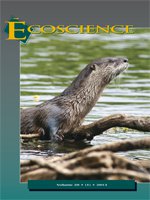Ants are important consumers in most terrestrial ecosystems. They show a great diversity of diets and foraging strategies. Here, we analyzed how circannual variation in resource use by the Mediterranean species Aphaenogaster senilis is related to colony life cycle and resource availability. In southwestern Spain, this species is active almost year-round, but foraging intensity decreases 10-fold between March and November, following larval production. In the summer, ants refrain from foraging at midday to avoid high temperatures. We hypothesized that diet and foraging plasticity could also explain the ecological success of this species. There are several techniques for assessing the diet of ants. Combining isotope analyses with conventional methods can provide better taxonomic resolution of resource utilization. Using a combination of classic and isotopic analyses, we found that 1) the proportion of plant and animal-derived items collected by foragers did not vary significantly from March to November, and 2) isotope analyses indicated a decrease in the trophic level of A. senilis between June and September, suggesting a difference between collected material and items assimilated. Interestingly, most animal prey were collected by individual ants, and many were retrieved alive. Therefore, A. senilis is not only a scavenger, but also a non-negligible predator, particularly of aphids. The abundance of the most common animal-derived items in the diet was proportional to their abundance in the study area. We conclude that A. senilis is an opportunistic species that is able to feed on a variety of resources, which may be key to its ecological success.
How to translate text using browser tools
1 March 2013
A Year in an Ant's life: Opportunism and Seasonal Variation in the Foraging Ecology of Aphaenogaster senilis
Stephane Caut,
Ángel Barroso,
Xim Cerdá,
Fernando Amor,
Raphaël R. Boulay
ACCESS THE FULL ARTICLE

Ecoscience
Vol. 20 • No. 1
March 2013
Vol. 20 • No. 1
March 2013
ant
composante du régime alimentaire
diet item
écologie trophique
Formicidae
Formicidae
fourmi




